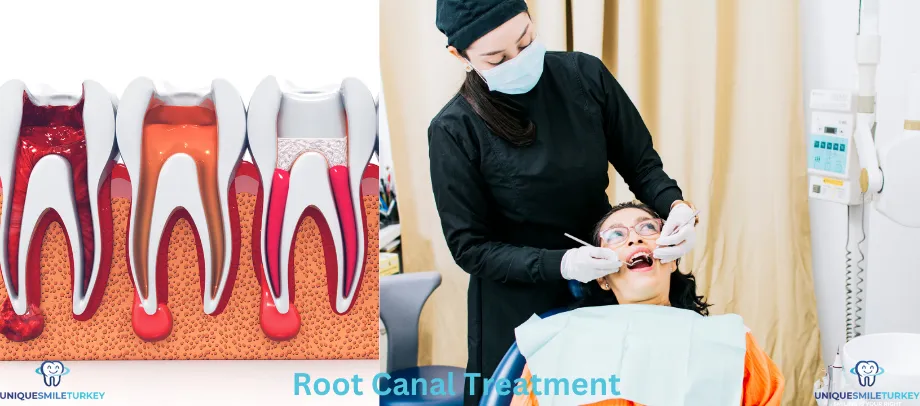


Dental treatments like root canal treatment and extraction have varied effects. To clarify, here's a comparison:

Overall, root canal treatment or root canal extraction relies on the dental problem, tooth health, and patient preferences. When feasible, dentists save natural teeth during root canals for long-term dental health and beauty. When tooth preservation is impossible, extraction and replacement are best. Our dental professionals will evaluate your issue and propose the best solution.
In order to save teeth severely damaged by infection or trauma, root canal treatment is a vital dental procedure. The need arises when the tooth's inner pulp, containing nerves and blood vessels, becomes inflamed or infected due to factors like severe decay, fractures, or trauma. Extreme discomfort and potential damage to the tooth's structural integrity may arise from this disease. An emergency root canal treatment involves removing the compromised pulp, disinfecting the interior, and sealing it to prevent further infection. Patients who choose painful root canal treatment may avoid having their teeth extracted, maintain their original dentition, and benefit from long-lasting dental health and comfort.
Common signs include a severe toothache that persists and becomes worse under pressure or when the temperature changes. Lingering sensitivity to hot and cold, accompanied by swelling and tenderness in the nearby gums, can signify the need. Discolouration of the tooth or the emergence of a pimple-like bump on the gums, known as an abscess, is additional red flags. It's important to heed these symptoms, as they denote infection or inflammation within the tooth's pulp. A timely appointment with a dentist may result in an early diagnosis and possible tooth salvation through a molar root canal operation, avoiding more serious dental concerns.
Preparing for a root canal involves a few simple yet important steps to ensure a smooth experience.
A root canal is an important part of maintaining your oral health and requires your full attention and preparation.
The success rate is above 90% when carried out by knowledgeable experts with the aid of contemporary technologies. The method effectively eliminates the infection, lessens the pain, and restores function. However, the outcomes may vary from person to person based on factors including the condition of one's teeth, how well one takes care of one's mouth, and how one takes care of oneself following treatment. There are instances when issues arise that necessitate going back. But improvements in methods and materials have made this less likely to happen. Care after treatment, like going to the dentist regularly, increases the chances that the results will last. In order to save teeth, improve oral health, and enable patients to keep their natural smiles, root canal treatment is a reliable option.
A root canal treatment takes approximately 1 to 2 hours. Generally, a straightforward single-rooted tooth may take about 1 to 2 hours. More intricate cases involving multi-rooted teeth or complications might extend the procedure to 2 to 3 appointments, each lasting around 1 to 2 hours. The length of a root canal treatment depends on a number of things, such as the location of the tooth, the difficulty of the case, and the patient's personal traits. Technology has made the procedure faster and more pleasant. While the surgery itself may not be time-consuming, spending the required time provides full treatment and the greatest result for maintaining your oral health.
Root canal treatment unfolds in several precise steps, all aimed at salvaging a compromised tooth and alleviating pain. Initially, the tooth is numbed with local anaesthesia, ensuring your comfort throughout. A protective sheet is placed around the tooth to maintain a sterile environment. Then, a small opening is created in the crown, granting access to the infected or inflamed pulp. Using specialised instruments, the pulp is gently removed, and the inner chamber is thoroughly cleansed and shaped. The space left behind is meticulously filled with a biocompatible material, sealing it to prevent further infection. Finally, a crown may be placed to restore the tooth's strength and function.